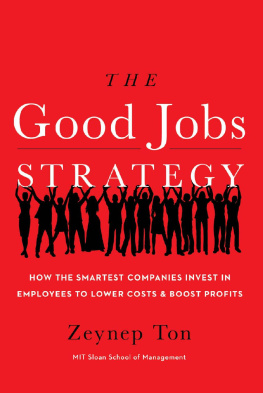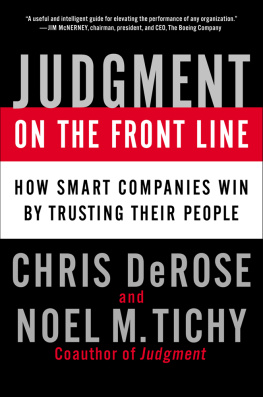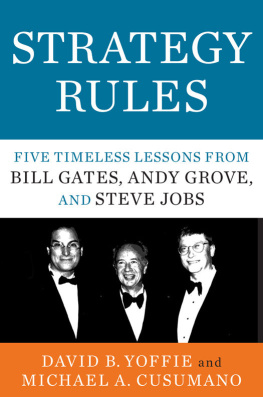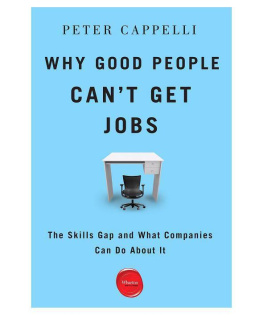
Text copyright 2014 by Zeynep Ton
All rights reserved.
No part of this work may be reproduced, or stored in a retrieval system, or transmitted in any form or by any means, electronic, mechanical, photocopying, recording, or otherwise, without written permission of the publisher.
Published by Lake Union Publishing, Seattle
www.apub.com
Amazon, the Amazon logo and Lake Union Publishing are trademarks of Amazon.com, Inc. or its affiliates.
eISBN: 9781477850220
Cover designed by Faceout Studio, Tim Green
Cover art Daniel Seward
Author photograph Evgenia Eliseeva
To my husband, Carlos, and to my children, Ali, Hakan, Ela, and Kerem
Contents
Introduction
T HERE ARE DIFFERENT ways to make money, I tell my MBA students on the first day of the class I teach on operations for service industries. You can certainly succeed at the expense of your employees by offering bad jobsjobs that pay low wages, provide scant benefits and erratic work schedules, and are designed in a way that makes it hard for employees to perform well or find meaning and dignity in their work. You can even succeed at the expense of your customers; for example, by offering shoddy service. People may not enjoy buying from you, but plenty of them will do it anyway if you keep prices low enough.
In service industries, succeeding at the expense of employees and at the expense of customers often go together. If employees cant do their work properly, they cant provide good customer service. Thats why our experiences with restaurants, airlines, hotels, hospitals, call centers, and retail stores are often disappointing, frustrating, and needlessly time-consuming.
Many people in the business world assume that bad jobs are necessary to keep costs down and prices low. But I give this approach a namethe bad jobs strategyto emphasize that it is not a necessity, it is a choice.
There are companies in business today that have made a different choice, which I call the good jobs strategy. These companies provide jobs with decent pay, decent benefits, and stable work schedules. But more than that, these companies design jobs so that their employees can perform well and find meaning and dignity in their work. These companiesdespite spending much more on labor than their competitors do in order to have a well-paid, well-trained, well-motivated workforceenjoy great success. Some are even spending all that extra money on labor while competing to offer the lowest pricesand they pull it off with excellent profits and growth.
At this point in the class, I tell my students that if they end up founding or leading a business, they will be able to choose how that business makes money. They can choose a low cost at any cost approach, but they cannot say they had no other choice. And finally, I tell them that if instead they choose the good jobs strategy, they had better take a lot of operations courseslike the one theyre inbecause operations is what makes the good jobs strategy possible.
They laugh, but they soon discover that I am not kidding. And that is what The Good Jobs Strategy is abouthow companies can use operations to deliver good jobs to employees, strong returns to investors, and low prices and good service to customers all at the same time.
The good jobs strategy is not just a book title, it is a concrete strategy. It combines investment in peoplemuch more investment than normalwith a set of operational decisions related to (a) how many products and services a company will offer, (b) the balance of job standardization and employee empowerment, (c) the allocation of work among employees, and (d) staffing levels and how employees will engage in continuous improvement. I did not invent this strategy. It is not the product of academic speculation. I observed it in a group of highly successful companies. I wanted to know how these companies managed to do very well and keep their prices low without making life miserable for employees and frustrating for customers.
, we meet the four model retailers that are the core of this bookcompanies that follow the good jobs strategy, offering good jobs, low prices, and excellent customer service, and generating great financial results all at the same time. Rather than being stuck in the vicious cycle, these companies are benefiting from what I call the virtuous cycle of retail.
, we look at how companies can stick with the good jobs strategy even when circumstances are pushing them hard the other way.
Although the strategy I will describe has been very successful, it is neither quick nor easy. In fact, it is complex and has to be carried out carefully, forcefully, continuously, and in the face of many obstacles. In return, it not only allows for better day-to-day and year-to-year performance, but it also allows companies to seize strategic opportunities by adapting to changing circumstances more quickly than other companies can manage.
The good jobs strategy can be seen at work in a variety of contexts, but in this book I focus on low-cost retail for three reasons. First, retail is where millions of people work. Walmart, the eight-hundred-pound gorilla of low-cost retail, is the worlds largest private employer, with more than 1.3 million employees in the United States alone. Second, low-cost retail jobs are notorious for their low pay, minimal benefits, unstable schedules, and lack of meaning and dignitythe epitome of bad jobs as I define the term. Third, of the people who believe that offering good jobs is possible, most do not believe it is possible to do so in such industries as low-cost retail. If the good jobs strategy is possible in low-cost retail, then it is possible pretty much anywhere.
Although the context of this book is retail, the good jobs strategy allows many other types of companies to use operations to provide good jobs for employees, high quality of goods and services at low prices for customers, and strong financial returns for investors. The examples include airlines, restaurants, hotels, call centers, distribution centers, and manufacturers.
I wrote this book for managers, executives, and entrepreneurs who want to offer good jobs but dont think they can because controlling costs is so important to their business. You will see that offering good jobs can in fact reduce costs and increase profits as long as it is combined with operational excellence. If you want to offer good jobs and low prices at the same time, operational excellence is not optional, it is mandatory.
I also wrote this book for people who believe that offering good jobs may be good for individuals and for society, but that business decisions should be made solely to maximize profits. You will see that the companies that follow the good jobs strategy dont do it just to be altruistic. They have found it to be the best and most sustainable way to provide superior returns to their investors in the long term.
The good jobs strategy is a long-term investment in your employees with the expectation that those well-paid, well-trained, well-motivated employees will generate even more than they cost. What makes them worth more than they cost is operational excellence. The companies examined closely in this book have all found this strategy to work. Many more companies should join them.
CHAPTER 1
An Unnecessary Sacrifice
G ROWING UP IN Turkey, I envisioned the United States as a place where anyone who worked hard could do well. For ten years, my experience in the States showed me how right I was. My hard work took me from an undergraduate volleyball scholarship to a professorship in operations, a good job that paid me well and gave me a chance to feel pride in my work.
Next page








